And what practical actions can Central Asian governments take to address climate change?
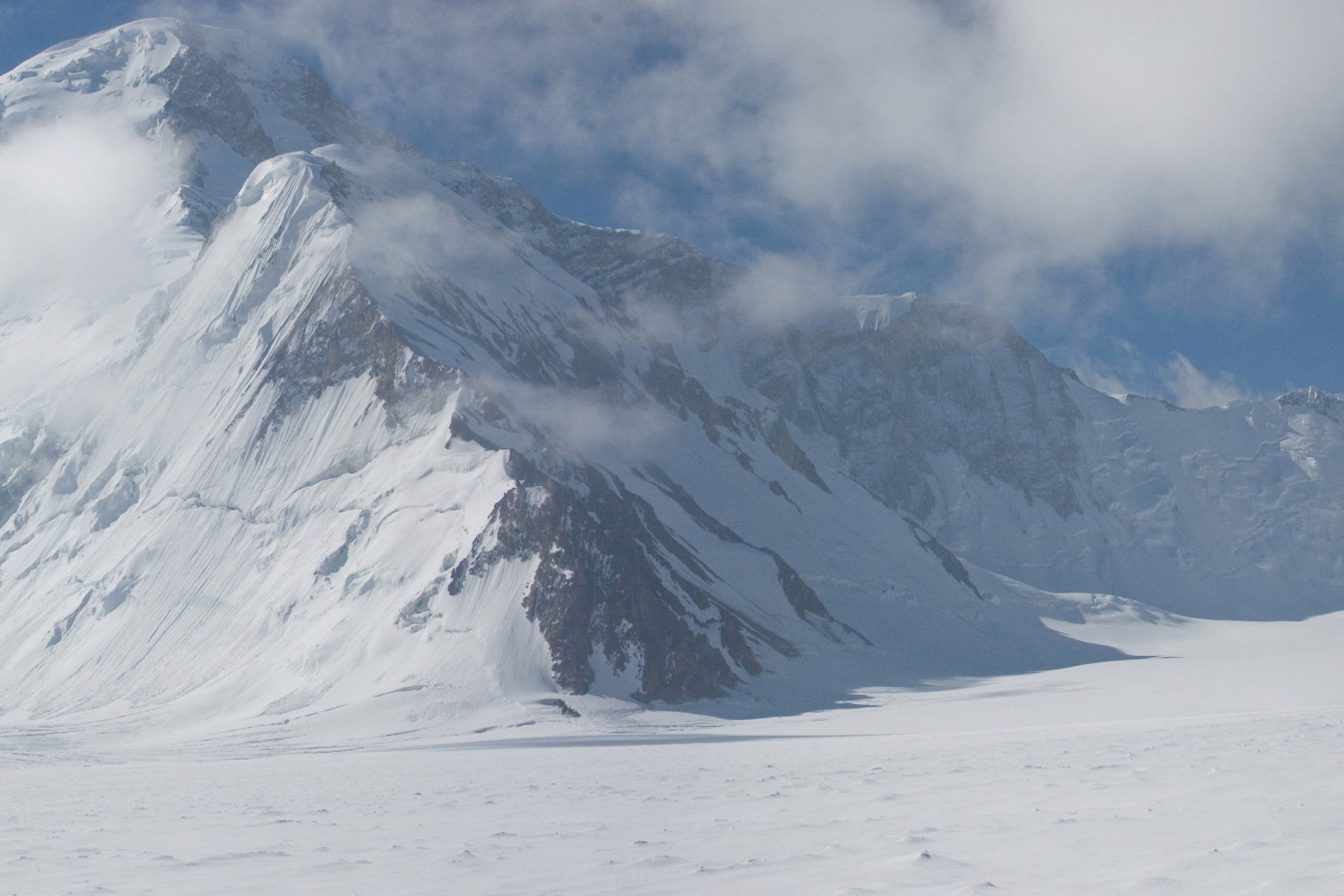 Glacier of the Geographical Society in Pamir
Glacier of the Geographical Society in PamirPhoto: Artem Rezontov
Experts note a tenfold increase in the number of sand and dust storms in recent years, which threatens the condition of glaciers. In recent decades, more than 1,000 glaciers have melted in Tajikistan . Because of this, natural disasters such as landslides and floods are becoming more frequent, threatening people and infrastructure in the countries of the region.
We tell you what Central Asian countries should do to change the situation.
How do dust storms destroy glaciers?
Rapid melting of glaciers is causing concern among the international community . Over the past few decades, the volume of Tajikistan’s glaciers, which account for more than 60% of the Central Asian region’s water resources, has decreased by almost a third.
Scientists have recently begun to talk more often about the negative impact of sand and dust storms on glaciers in Central Asia. The wind brings dust from the deserts to the glaciers and firn snows of the highlands, even to an altitude of 5-6 thousand meters above sea level.
Sand and dust storms actively affect the thermal properties of glaciers due to the presence of pollutants in their composition.
Chairman of the Committee for Emergency Situations and Civil Defense under the Government of the Republic of Tajikistan Rustam Nazarzoda on September 26 this year during a regional meeting on the impact of sand and dust storms on glaciers in the Asia-Pacific region, noted:
“In recent years, the number of sand and dust storms in Tajikistan has increased more than 10 times. If in the early 1990s only 2-3 cases of sand and dust storms were registered, then in the last few years such weather has been recorded more than 35 times a year. Only during the entire summer and September 2023, almost every two and a half days, residents of the republic found themselves in the grip of dusty weather, this situation continued in 2024.”

According to experts, 4.1% of the territory of Tajikistan, or more than 560 thousand hectares of land, is subject to severe sand and dust storms.
Sand and dust storms transport large quantities of dust and fine particulate matter over long distances, depositing them on the surface of glaciers. These impacts not only cause environmental problems, but also multiply socio-economic problems affecting the availability of water for agriculture, hydropower, and drinking water supply, thereby affecting livelihoods and food security in the region.
“As a result of climate change, we all notice that the temperature background is rising in every country. This is what has influenced the fact that in recent years alone, thousands of small glaciers have disappeared in Tajikistan,” explained Umeda Yusufi, head of the Crisis Management Center of the Committee for Emergency Situations and Civil Defense.
Glaciers suck up all the dust above them
Experts speaking at a regional meeting, “Understanding the Impacts of Sand and Dust Storms on Glaciers in Asia and the Pacific: Towards Conservation and Cooperation,” explained how sand and dust storms affect glaciers.
After such a storm, dust particles fall on the glacier surface and into the meltwater as a result of dry and wet deposition. Dust particles affect the chemical composition of the glacier meltwater, changing the hydrochemical characteristics of the runoff.
Some dust particles stored in glaciers are released with meltwater into glacial runoff and eventually enter downstream aquatic ecosystems.
Dust storms can also lead to an increase in the concentration of water-soluble ions in the atmospheric environment of the glacial zone after them.
In the arid and semi-arid region of Central Asia, which is a significant source of dust in the Northern Hemisphere, strong winds carry large amounts of dust to the North Pacific Ocean and the West Coast of America or even around the world.
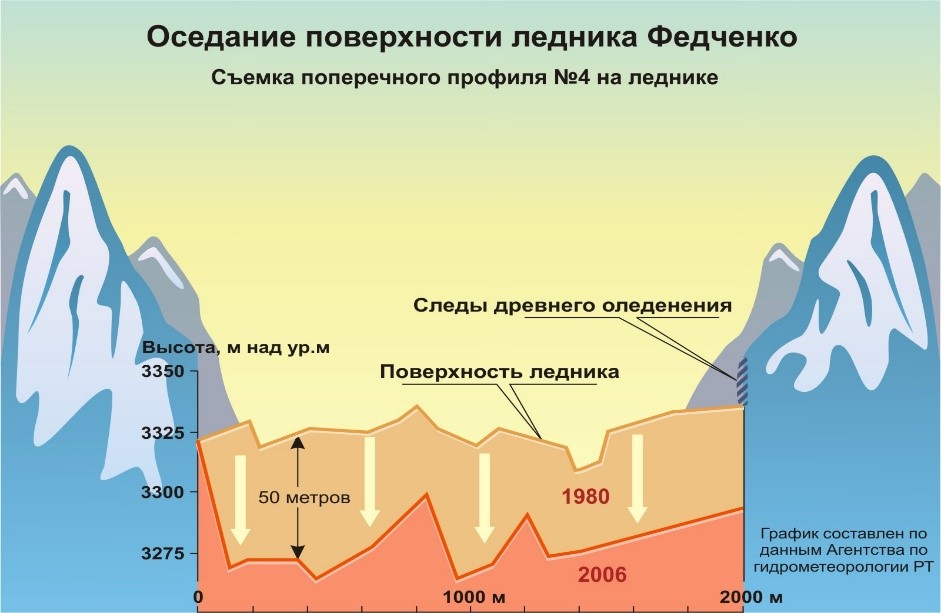
Director of the Center for the Study of Glaciers of the Republic of Tajikistan Abdulhamid Kayumov, who has been studying the state of glaciers in Tajikistan and abroad for many years, says that the study of glaciers is a new direction in science: “There are quite a lot of published works on the impact of dust storms on other sectors, such as agriculture, communications, energy, etc. But the world community began to pay attention to the impact of dust storms on glaciers after the initiative of the President of Tajikistan Emomali Rahmon to declare 2025 the year of glaciers.”
According to the scientist, if anthropogenic emissions from factories and plants have a limited radius, then the impact of sand and dust storms is enormous. They reach the Eastern Pamirs from all over the world.
The Center for the Study of Glaciers of Tajikistan has determined the content of heavy metals on the glaciers of the Eastern Pamirs and has preliminarily concluded that they are brought there by dust storms. The center is currently studying not only the content of metals in glaciers, but is also setting up isotope studies.
“With the help of isotopes, we study the entire structure of the glacier at a more subtle level. In the near future, we intend to establish radioisotope studies, which provide more accurate information about the impact of the anthropogenic factor on glaciers. Data is still being collected. The results will be known for sure next year,” Abdukhamid Kayumov noted.
Sabur Abdullozoda, doctor, professor of physical and mathematical sciences, head of the laboratory of atmospheric physics at the Institute of Physics of the National Academy of Sciences of Tajikistan, listed all the deserts of the region, including the Sahara, from where dust comes to the glaciers of Tajikistan.
“Dust at a height of up to 10 km at a speed of 120 km/h moves to the peaks of not only the Pamirs, but also all the peaks of Asia,” the scientist said. According to his data, sand and dust storms in the 80-90s of the last century lasted from 3 to 6 hours. After them, rain fell and everything in the atmosphere was cleared. Now, dust invasions are slow and there is no rain.
“Most of the sand and dust storms in Tajikistan come from the Sahara. They reach Uzbekistan through the deserts and from Tursunzade they enter Dushanbe. The second direction of the PPB is through Shahritus and Ayvaj,” he explains.
Dushanbe is surrounded by mountains that trap dust. However, fine particles still reach the glaciers.
According to the scientist, glaciers, like a vacuum cleaner, suck up a stream of particles, and if dust, including salt particles, gets into them, then the rate of melting of glaciers increases.
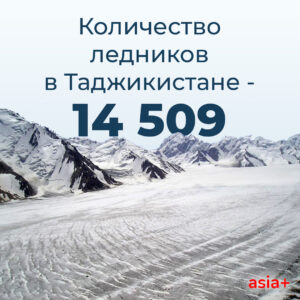

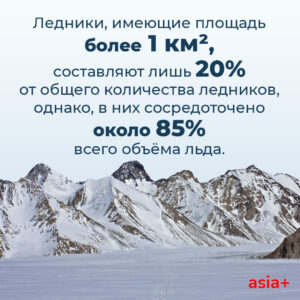
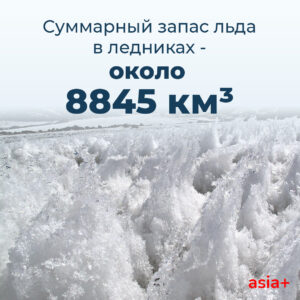
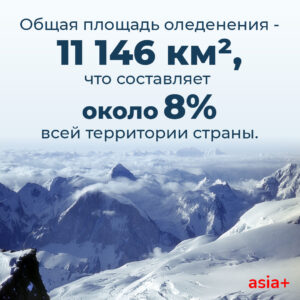
The damage is difficult to calculate
There is no precise data on the economic damage from melting glaciers in Central Asian countries. However, according to the World Bank, the economic damage from natural disasters, which include melting glaciers, can amount to between 0.4% and 1.3% of the annual GDP of the countries in the region.
As a result of melting glaciers, there is a shortage of irrigation water. The main rivers of Tajikistan – Amu Darya, Syr Darya, Zarafshon – provide water not only to the republic, but also to other countries of Central Asia. Low water and drought reduce agricultural yields and provoke a threat to food security.
Tajikistan has to cope with the consequences of floods, mudflows, and floods caused by melting glaciers. The drop in water volumes could threaten the country’s plans to become an energy exporter, as Tajikistan uses rivers to generate hydroelectric power.
Changes in ecological zones may result in increased vulnerability of plants and the inability of certain species to adapt to new climatic conditions, creating the possibility of loss of forest resources such as firewood, fruits and medicinal herbs.
Melting glaciers also lead to population displacement, destruction of infrastructure and exacerbation of social inequalities.
In order to reduce the damage from melting glaciers, their condition needs constant monitoring, according to scientists from Tajikistan. However, Central Asian countries face the following problems when monitoring the impact of sand and dust storms.
This is the lack of fully functioning national forecasting, early warning and monitoring systems. This makes it difficult for countries in the region to share data and undermines coordinated preparedness and mitigation efforts.
There are difficulties in obtaining the input data needed to monitor and calibrate the storm detection system. Information on soil moisture and river runoff is particularly difficult to obtain.
The unsystematic and sporadic nature of the registration of sand and dust storms, even in megacities, makes it impossible to calculate the economic damage from this natural phenomenon.
Is it possible to slow down the melting of glaciers?
Experts have explained how to slow down the process of glacier melting at the global and domestic levels.
At the global level, this is mass informing of the population, work on environmental education, and the creation of international environmental projects that help control climate change.

At the state level – legislative regulation of deforestation and their restoration; funding of research in the field of ecology; educational work with the population; control of the amount of harmful emissions into the atmosphere.
And also the transition to a circular economy: less waste, less harmful emissions; lower rate of temperature increase on the planet; reduction in the number of landfills; introduction of liability for unauthorized dumping; development of “green” energy as an alternative to the use of fossil fuels.
At the production level – the use of alternative energy sources, waste reduction, recycling, increasing environmental awareness of employees, separate waste collection in offices and enterprises, etc.
At the household level – saving electricity, water; choosing alternative modes of transportation: walking or cycling; using heating and air conditioning rationally.
According to forecasts, several thousand small glaciers in Tajikistan will completely disappear by 2050. The country’s glaciated area will decrease by 20%, and the volume of ice will decrease by 25%.
Scientists predict an increase in the average temperature on Earth by 4-5 °C by 2050, which will trigger massive melting of glaciers across the planet.

What actions are the governments of Central Asia taking?
To change the situation in Tajikistan, a National Action Plan for the Prevention and Mitigation of the Consequences of Sand and Dust Storms for 2022–2030 is in effect.
On March 3, 2021, the President of Tajikistan, President of the International Fund for Saving the Aral Sea Emomali Rahmon, speaking at the first meeting of the High-Level Panel on Water and Climate, proposed declaring 2025 the International Year of Glacier Conservation.
The National Climate Change Adaptation Strategy for the period up to 2030 defines the implementation of measures that help reduce the impact of climate change, including the use of renewable energy sources.
The medium-term development program of Tajikistan for 2021-2025 includes measures aimed at reducing greenhouse gas emissions and adapting to climate change.
International experts recommend that all Central Asian countries implement soil- and water-saving methods in agriculture, sustainably manage pastures, and reduce dust emissions at large industrial sites and in areas where minerals are mined.
At the regional scale, the project “Regional approaches to combating sand and dust storms and drought” is operating in Central Asia. It aims to support countries in the region in developing and implementing strategies to reduce the risks of sand and dust storms at the national and regional levels.
In addition, national programs are being implemented in all Central Asian countries. All of them are aimed at the following results:
– Minimizing the melting of glaciers and protecting them from pollution.
– Efficient use of water and energy potential.
– Development of cooperation between all interested parties in the region.
– Creation of a warning and preparedness system for risks associated with glacier melting.
– Implementation of energy-efficient and resource-saving technologies.
These measures may slow down the melting of glaciers, but everything depends on future climate change.
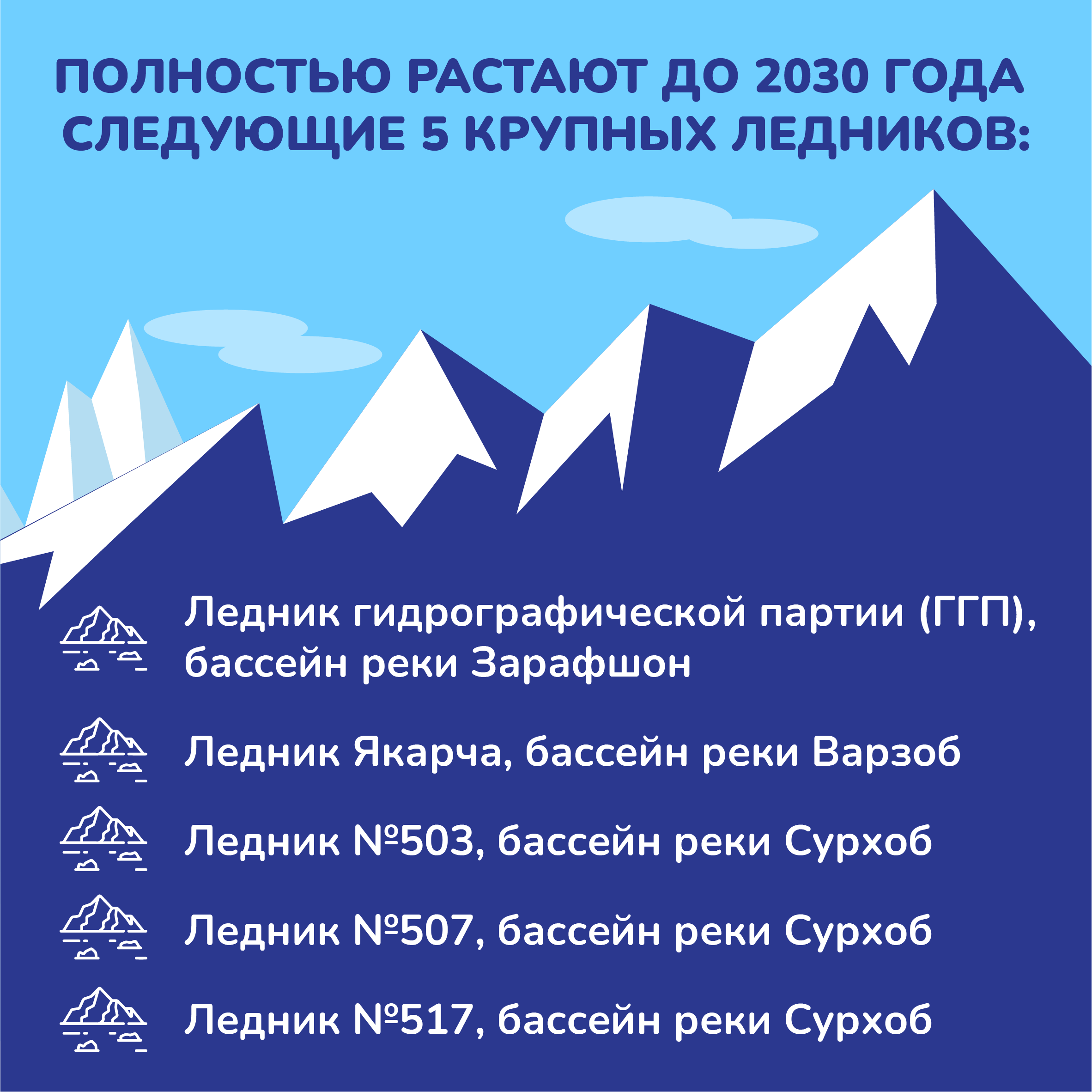
Advanced countries have technologies for preserving high-mountain glaciers. Among them, we can note China’s experience in covering glaciers with reflective film. It is applied to the ice using aerosols and drones. The film has a 93 percent reflectivity and prevents the impact of solar heat on snow and ice.
In Switzerland, a technology has been developed for using geotextile glacier covers . They protect against solar radiation, but still allow water to pass through. According to glaciologist Matthias Huss from the University of Fribourg in Switzerland, such covers can reduce ice melting by about 50-70%.
There is also a European technology of snowmaking, which consists of blowing up artificial snow with the help of cannons, this reflects most of the solar radiation into the sky, preventing melting. However, this requires colossal funds, and their use in the glaciers of Central Asia looks like a fantasy for now.
Meanwhile… ADB launches glacier protection program
This was stated on November 14 by the President of the Asian Development Bank (ADB) Masatsugu Asakawa at the ministerial meeting held within the framework of COP29, dedicated to the Central Asia Regional Economic Cooperation (CAREC) Partnership on Climate, Innovation and Trade.
He noted that millions of people in Central and Western Asia are experiencing the negative effects of melting glaciers.
“The glaciers that feed vital rivers are melting at an alarming rate. In the last 30 years, 25% of the mass of glaciers in the highlands of Asia has been lost. Even a 1.5 degree rise in temperature could cause half the world’s glaciers to disappear.
But today we are taking a big step forward with the launch of the Glacier to Farm (G2F) programme, which will expand glacier protection and support sustainable water management, as well as enhance social protection for vulnerable communities,” he said.

